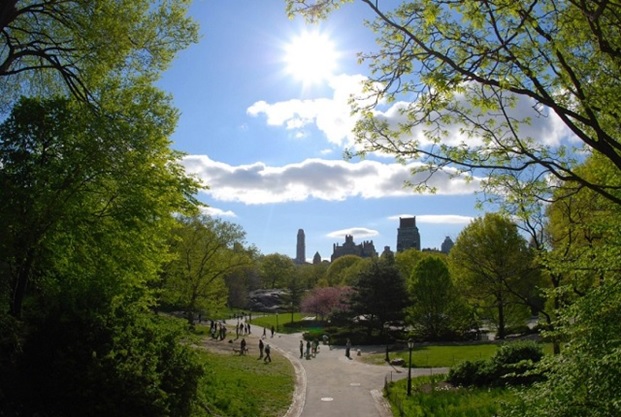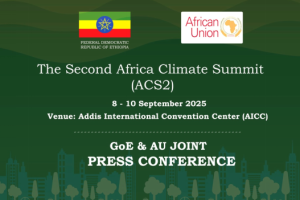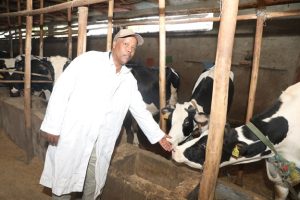
BY EPHREM ANDARGACHEW
Urban greenery tasks are important to create a balance between urbanization and ecology. It also helps to form more sustainable places, communities, and lifestyles, and consume less of the world’s resources. Hence, the government, city administrates, the residents, higher institutions, and stakeholders are expected to collaborate on the urban and transport planning and socioeconomic and political activities of the city and towns.
Greening cities refer to the link between human life and individuals to street trees, urban greenspaces, and sub-urban forests. Despite the difference in tree species, size, and so on, green cities are essential since they are powerhouses for providing ecosystem services such as air pollution removal, stormwater pollution capture, carbon sequestration, and urban heat regulation. So, they are indispensable to green infrastructure for any healthy, vibrant community.
Reports and studies show that urban greenery plays a key role to mitigate climate change effects since more people than ever live in urban areas and people in these areas need a livable environment. According to World Health Organization (WHO), over 90 percent of the population lives in communities where air quality levels do not meet standards. And it’s not just clean air they need, but cool air. The combination of hard surfaces radiating heat, tall buildings blocking the wind, and loss of trees create what’s known as the urban heat island effect. Without trees, hot cities will continue to get hotter, less livable, and more dangerous.
Taking the value of planting tree seedlings into account for mitigating the negative effect of climate change, Ethiopia, for the last four consecutive years, has been planting tree seedlings across the nation. So far, the country has planned 25 billion tree seedlings.
Ethiopian Prime Minister Abiy Ahmed said that currently countries have been confronted with extreme weather conditions, flooding, wildfires, powerful storms, unprecedented heat waves, increased desertification, and many other phenomena.
“While the climate change discourse has evolved over many years, today as a global community, we have reached a critical point where we are living the reality. Beyond conferences and summits, addressing the climate change challenge requires tangible action,” the premier noted.
It is true that the negative effect of climate change on the cities has forced city governors to think and stand together for a tangible solution. Because human-induced climate change is widespread rapidly. Since the hottest months are recorded everywhere, it, hence, is time to act now by planting trees in the communities that need them most to prevent the worst impacts of climate change from endangering the lives of the most vulnerable populations.
Addis Ababa City Administration, apart from Green Legacy Initiatives participation, has planted over 4 million tree seedlings in a day. Unlike rural areas, urban areas’ carbon emissions increase over time. So, these planting tree seedlings are part of the solution since a single tree can produce oxygen and absorb rainwater, while it improves community aesthetics, increases residential property values, and so on. Therefore, planting trees benefits ever-growing populations that need healthy communities and a livable environment.
Addis Ababa City Administration Mayor Adanech Abebie said that planting tree seedlings is an indication of the solidarity of the people of Addis Ababa. The city administration in collaboration with the residents has planted over 15.5 million tree seedlings for the last four consecutive years. Hence, the city’s residents have made an unforgettable green fight.
“In Addis Ababa, the green legacy that we left together every year is full of hope for tomorrow, where fresh air can be breathed and natural attraction values are preserved. Greenery tasks are not only the construction of buildings, but it is a sign of a common commitment to make a beautiful city where refreshing plants and greenery are preserved,” she added.
As stated by Prime Minister Abiy Ahmed (PhD), a nationwide green culture has taken root since 2019, evolved, and grown over a span of four years, resulting in a significant decline in the rate of deforestation and the formation of new forests.
These new forests will be essential in carbon sequestration as Ethiopia forges ahead in efforts to tackle climate change. These tree species also include fruit varieties, mainly avocado, mango, and papaya, aimed at making the Green Legacy Initiative improve access to food and nutrition and enhance export ambitions. A key catalyst for our success, however, is political will and demonstrable commitment at all levels of leadership, Prime Minister Abiy explained.
Indeed, human activities have negative impacts and have already led to the loss of forests since they use forests for fuel, food, medicines, and building materials. Because the life of city people is highly intertwined with activities that expose pollution. Hence, it is imperative to protect and restore forests that are lost due to urban development and expansion via urban greenery tasks.
The Ethiopian Herald 21 August 2022




